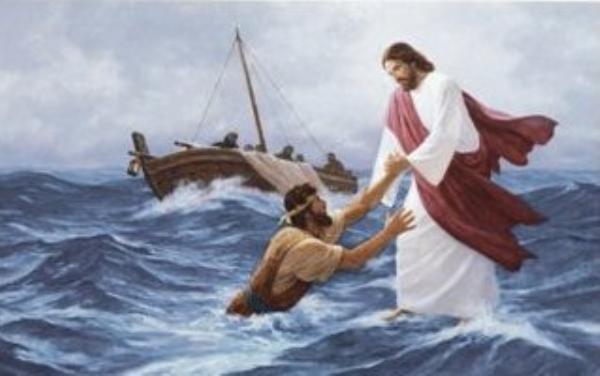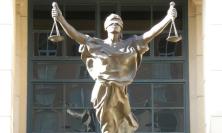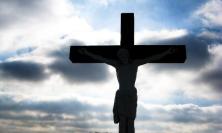The appearances of the risen Jesus to his disciples are recorded in the four gospels and by St Paul, although each of these sources provides us with a different narrative. But are there other encounters between Jesus and his disciples that may actually have taken place after the resurrection, even if the context in which they are placed by the evangelists suggests otherwise? Fr Jack Mahoney SJ examines some puzzling passages in the gospels.
The appearances of Jesus after his resurrection that we find described in the New Testament are difficult to harmonise with one another; indeed it is widely agreed that if the apostles had made the whole thing up they would have produced something far more coherent than the confused and confusing descriptions of what happened that we actually have. As if all of the recorded appearances of the risen Jesus were not bewildering enough, scholars suggest that there are other passages in the gospels which also refer to post-resurrection appearances of Jesus. The most striking of these is the account of Jesus walking on the Sea of Galilee.
Walking on the water
The earliest description we have of this event is found in Mark’s Gospel. After teaching a large crowd of people who had gathered around him, Jesus sent the disciples off by boat to return to Bethsaida while he went up on the mountain to pray (Mk 6:34-46). Then,
When evening came, the boat was out on the sea, and he was alone on the land. When he saw that they were straining at the oars against an adverse wind, he came towards them early in the morning, walking on the sea. He intended to pass them by. But when they saw him walking on the sea, they thought it was a ghost and cried out; for they all saw him and were terrified. But immediately he spoke to them and said, ‘Take heart, it is I; do not be afraid.’ Then he got into the boat with them and the wind ceased. And they were utterly astounded. (Mk 6:47-51)
The reaction of the apostles is described similarly in Matthew’s account, as he comments that at the appearance of Jesus walking on the lake, ‘they were terrified, saying “It is a ghost!” And they cried out in fear’ (Mt 14:26); while John’s later version is, ‘they saw Jesus walking on the sea ...and they were terrified’ (Jn 6:19).
It is interesting to note that all of these references to alarm at the appearance of Jesus on the water are similar to Luke’s comment that, at the sight of the risen Jesus on the evening of the first Easter Sunday, the disciples ‘were startled and terrified, and thought that they were seeing a ghost’ (Luke 24:37). Mark’s observation that, ‘Immediately he spoke to them and said, “Take heart, it is I; do not be afraid”’ (Mk 6:50) is repeated by Matthew (Mt 14:27) and also by John (Jn 6:20). Interestingly, the reassurance of Jesus to the terrified disciples in the boat is similar to the various ways in which he dispelled the fears of his followers when he first appeared to them after his resurrection – both to the women at the tomb who were encouraged not to be afraid (Mt 28:10), and the comforting greeting of ‘peace be with you’ that Jesus offered to his disciples in Luke (Lk 24:36-38) and several times in John (Jn 20:19, 21, 26).
It is attractive, then, to see the details in the account of Jesus walking on the Sea of Galilee as clues that point to the passage describing an appearance of the risen Jesus. Meier is not alone in regarding it as ‘plausible’ that Jesus’s walking on the water is a post-resurrection appearance.[1] Raymond Brown cites the great C. H. Dodd as noting that in the three gospel accounts of the walking on the water there are many features appropriate to the literary form of a post-resurrection narrative, suggesting that the passage may have originally concerned an appearance of the risen Jesus.[2] Dodd uses the word ‘originally’, because sometimes the Gospels are like patchwork quilts which have fragments of material stitched together, with the joins more obvious in some places than in others. Pericopes, that is, particular passages, often turn out to be composed of sayings of Jesus, or events concerning him, which have been woven together in a different order by an evangelist; sometimes part of one scene may be taken by an evangelist and stitched into another, to create a particular overall impression that he wants to share with his readers. It would be plausible, then, that a passage which originally described the risen Jesus walking on the waters of the Sea of Galilee was later stitched into a narrative of Jesus’s activities by the Sea of Galilee during his lifetime.
Forgiving Peter?
Another episode in the gospels that some scholars consider to have been originally a post-resurrection appearance, is the description of Peter falling on his knees before Jesus after a miraculous draft of fish, and pleading, ‘Go away from me, Lord, for I am a sinful man’ (Lk 5:8). This is usually understood as a reaction on the part of the impetuous Peter to the miracle that Jesus had just performed. But it seems a strange reaction: why should Peter confess his sinfulness, rather than the awe and wonder which usually followed Jesus’s miracles? And why did Jesus respond by then saying to Peter, ‘Do not be afraid. From now on you will be catching people’ (Lk 5:10)? In this context, this seems a surprisingly early commissioning of Peter. These details begin to raise suspicions that this dialogue is actually an insertion from a different occasion.
We know that Jesus appeared to Peter on the day of his resurrection: Luke (Lk 24:34) and Paul (1 Cor 15: 5) inform us of this, although they provide no further details (they probably shared the same source).[3] What occurred in that meeting between the risen Jesus and Peter? Their last interaction, Luke tells us, had been when Peter denied Jesus three times during his trial, after which ‘The Lord turned and looked at Peter. . . . And he went out and wept bitterly’ (Lk 22:54-62). In their first encounter after the resurrection, the risen Jesus would no doubt have forgiven Peter for his betrayal and this would surely have been accompanied by an abject confession of guilt and begging of forgiveness on the part of his leading apostle. The scene following the miraculous draft of fish, which depicts Peter falling to his knees before his ‘Lord’ to confess his sinfulness (5:8-10), fits very well with what we would expect to have happened when Jesus appeared to Peter after his resurrection. The suggestion of it being a post-resurrection event is strengthened by the addition of Jesus’s following observation: ‘Fear not; from now on you will be catching people’ (Lk 5:10). The ‘fear not’ is reminiscent of appearances of the risen Jesus, as we have seen. The whole scene reads more like a post-resurrection rehabilitation of Peter and renewal of his apostolic commission by Jesus.
Peter walking on the water
It is appealing now to consider as a further disguised post-resurrection event the description of Peter himself walking on the water at the invitation of Jesus. When Jesus approached his disciples’ boat on the Sea of Galilee and reassured them, ‘It is I’, Matthew alone of all the Gospels (Mt 14:28-31) goes on to describe an event which began with Peter’s typically impetuous cry, ‘Lord, if it is you, command me to come to you on the water’. When Jesus replied simply, ‘Come’, Peter clambered out of the boat and made for Jesus across the water, but then, ‘battered by the waves’ and the wind, as the boat itself was (Mt 14:24), Peter lost his nerve and began to sink, crying out, ‘Lord, save me!’ Whereupon Jesus ‘reached out his hand and caught him, saying to him, “You of little faith, why did you doubt?”’(14:30-31)
Some years ago when I was quite seriously ill, I drew spiritual comfort from picturing this event of Peter being called across the water to join his Lord, especially because I felt it had probably inspired the lines of the 14th century prayer, Anima Christi: ‘in the hour of my death call me, and bid me come to thee’.[4] The scene is further enriched if we think of it as an appearance of the risen Christ inviting Peter to join him. Raymond Brown considers that this event involving Peter, ‘may have been post-resurrectional’,[5] a suggestion which is made all the more attractive if we now consider that it depicts a forgiven Peter wanting to be with his risen Lord to prove that he does love him, in an interesting parallel with John 21:7, where Peter rushes ashore to join the risen Jesus by the lakeside.
Post-resurrection instructions
At the end of his gospel, Luke informs us that when the risen Jesus appeared to all his disciples on the evening of his resurrection he, ‘opened their minds to understand the scriptures’ which had foretold his suffering and rising from the dead, so that they would be able to witness ‘in his name to all nations, beginning from Jerusalem’ (Lk 24:45-48). In the Acts of the Apostles, Luke picks up this post-resurrection teaching of Jesus and expands it to describe how he ‘appeared to them over the course of forty days speaking about the kingdom of God’ (Acts 1:3). The use of the number ‘forty’ is a biblical convention, expressing a considerable length of time devoted to God’s purposes, as the Israelites spent forty years in the desert before entering the promised land (Deut 8:2) and Jesus spent forty days in retreat preparing for his ministry (Mk 1:13). Now Jesus was spending a similar stretch of time preparing his followers to witness to ‘the kingdom of God’. He once said to a crowd that wanted to detain him, ‘I must proclaim the good news of the kingdom of God to the other cities also; for I was sent for this purpose’ (Lk 4:43); now the risen Jesus was sharing his mission with his apostles. Not that he spent this time of preparation continuously with them; as chapter 21 of John’s Gospel suggests, but as the potentially hidden post-resurrection appearances we have been considering also seem to illustrate, he appeared in their company from time to time.
Commentators seem strangely silent in trying to uncover what may have happened between Jesus and his apostles during those ‘forty days’ after the resurrection when we are told by Luke that he continued to instruct them; yet that post-resurrection period offers a way of explaining several puzzling passages in the gospels. For instance, Jesus is recorded as teaching in his lifetime that his followers should ‘deny themselves and take up their cross and follow me’ (Mk 8:34; Mt 10:38), possibly implying that they would suffer persecution (although Luke spiritualises the instruction to ‘take up their cross daily and follow me’ [Lk 9:23]).
I have often felt unhappy with this instruction of Jesus to his disciples during his public life to ‘take up their cross’ and follow him, because it seemed to require too detailed a knowledge of his fate. Hence I was relieved to find Fitzmyer ask, ‘does it represent an authentic saying of Jesus, uttered in a pre-crucifixion context? . . . what meaning would it have had on the lips of Jesus prior to his crucifixion? ... the problem is to explain why Jesus would have used such an image for following him’. In reply to all of which, Fitzmyer concludes that the saying ‘must come from the early Christian community’.[6] However, in the light of what we have been considering above, why could the statement not have come from the resurrected Jesus himself after his crucifixion, as he discussed with his disciples what was to be learned from his death?
Another questioned passage, found only in Matthew’s Gospel, is the famous response of Jesus to Peter’s confession that Jesus was ‘the Messiah, the son of the living God’ (Mt 16:16), when Jesus described Peter as the rock on which he proposed to build his Church (Mt 16:16b-19). Brown acknowledges the widely-held view that Matthew had added material to this scene, as well as pointing to a post-resurrection setting for this commissioning of Peter.[7] Harrington also notes that the very Semitic character of the language in Jesus’s address to Peter suggests that ‘we are most likely dealing with a pre-Matthaean tradition that Matthew inserted into the text’.[8] He reports that some commentators suggest that this episode originated as a resurrection appearance to Peter and he goes further in suggesting that, because Matthew does not report any appearance of the risen Jesus to Peter, ‘perhaps he retrojected the appearance story into the career of the earthly Jesus’.[9] Might it not, then, be the case that the origin of the passage goes back to a conversation between Jesus and Peter as part of the post-resurrection teaching of Jesus in which he commissioned Peter to head his Church?
In an earlier piece for Thinking Faith, I suggested that the ‘forty days’ which Jesus spent in prayer at the beginning of his ministry (Lk 4:1-14) were a period of preparation and planning for his preaching of the kingdom of God. We might therefore think of the ‘forty days’ that the risen Jesus spent instructing his disciples as also looking forward, planning their ministry and the work of ‘the Church’ he was going to found (Mt 16:18). Luke tells us that the apostles asked Jesus if he was now going to ‘restore the kingdom to Israel’, but Jesus avoided the question and described instead how they would ‘receive power when the Holy Spirit has come upon you; and you will be my witnesses in Jerusalem, in all Judaea and Samaria, and to the ends of the earth’ (Acts 1:6-8). During these forty days then, several events could have occurred: the post-resurrection ending of Matthew’s Gospel and the ending of Mark, when Jesus mandated his disciples to go forth and make disciples, and baptise and instruct them (Mt 28:18-20; cf Mk 16:15); the detailed commissioning of Peter to care for his sheep, as related in John 21; and, as argued above, the transformation of Peter in a post-resurrection setting to become a fisher of people (Lk 5:10). It becomes all the more attractive, then, to conclude that the appointment of Peter as head of the Church which was going to be instituted also took place in the course of the forty days that the risen Jesus spent instructing his apostles on continuing his mission.
When those forty days were over, Luke tells us at the end of his gospel, Jesus led his followers out to Bethany, blessed them, and left them. For them this was not a parting or a loss, or a saddening experience. On the contrary; as Jesus withdrew from their sight ‘they worshipped him and returned to Jerusalem with great joy’ (Lk 24:50-52), for there they were to await the promised power of the Spirit. With the coming of the Holy Spirit of Christ on the apostles the age of Christ’s Church was about to begin, and he had promised, Matthew tells us (28:20), to be ‘with’ them until the end of the age.[10]
Fr Jack Mahoney SJ is Emeritus Professor of Moral and Social Theology in the University of London, and a former Principal of Heythrop College. His latest book, Christianity in Evolution: An Exploration, is soon to be published by Georgetown University Press, Washington, D.C.
[1] J. P. Meier, A Marginal Jew (New York: Doubleday, 1994), vol. 2, pp. 921-2.
[2] R. E. Brown, The Anchor Bible: The Gospel According to John, II (xiii-xxi) (London: Geoffrey Chapman, 1971) pp. 1087-88.
[3] Compare, for example, their descriptions of the establishing of the Eucharist: Lk 22:19-20 and 1 Cor 11:23-26.
[4] ‘In hora mortis meae, voca me; et jube me venire ad te’ (Anima Christi).
[5] Brown, p. 1088.
[6] J. A. Fitzmyer, The Anchor Bible: The Gospel According to Luke, I (New Haven: Yale University Press, 1981), p. 785
[7] Brown, pp.1088-89
[8] Ibid.
[9] D. J. Harrington SJ, The Gospel of Matthew (Sacra Pagina, Collegeville, Min: Glazier, 1991), p. 250.
[10] On God being ‘with’ us, see my Thinking Faith article, God with us (12 August 2009).






